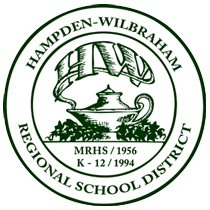Aligned for Student Success
The Hampden-Wilbraham Regional School District is committed to providing a vertically and horizontally aligned Pre-K–12+ curriculum that ensures consistency, coherence, and high-quality learning experiences for all students. The curriculum is grounded in evidence-based systems and practices and delivered through high-quality instruction that is responsive to the diverse needs of every learner.
We believe that a well-aligned curriculum, implemented with fidelity, is essential to the success of our students, educators, and schools. It supports continuous academic growth and smooth transitions across grade levels. By emphasizing both essential content and real-world application, this approach creates multiple pathways for students to acquire the skills necessary for future success, while also addressing their current individual needs.
By achieving the goal of a vertically and horizontally aligned Pre-K–12+, the district will be better positioned to meet the academic and developmental needs of all learners, ensuring that every student has the opportunity to thrive.
Lisa Curtin
Director of Curriculum, Instruction, and Professional Learning
Links and Files:
Curriculum Maps
We are pleased to share our district curriculum for each grade level and subject area through our curriculum maps.
A curriculum map serves as a guide for outlining the knowledge and skills students are expected to develop in each subject and grade level. While we hope you find these maps helpful in gaining insight into what our students are learning, please keep in mind that they are overviews and do not fully reflect the depth and richness of the daily learning experiences in our classrooms.
English Language Arts (ELA) Instructional Vision
All students receive explicit instruction in comprehensive literacy skills to enable them to meet the standards and be able to understand and enjoy complex works of literature. Students will develop the skills in reading, writing, speaking and listening that are the foundation for any creative and purposeful expression in language. Using high quality literary and informational texts, students will be able to build their knowledge base to enable them to make connections across content areas and understand the world around them.
Teachers will…
- Implement standards and evidence-based core literacy instruction
- Provide frequent opportunities for students to collaboratively discuss and write about their reading to develop critical thinking and demonstrate understanding.
- Utilize complex, rigorous texts and provide scaffolding for all students to meet high expectations.
- Ensure texts and multimedia materials that extend across a variety of genres, cultures, and time periods.
So that students can…
- Apply literacy skills while reading texts and multimedia materials independently to become open minded readers and writers
- Communicate ideas and knowledge through a variety of modalities and purposes.
- Think critically to problem solve and analyze outcomes both orally and in writing.
- See themselves and others represented within texts and multimedia materials.
ELA Curriculum Maps
Elementary School
Middle School
High School
Mathematics
Mathematics Instructional Vision
We believe all students are capable learners of mathematics and students learn math best by doing math. We believe rigorous, comprehensive, accessible and equitable mathematics education builds students' understanding and skills through active engagement in meaningful mathematics.
Following the Massachusetts Mathematics Curriculum Framework, the focus is on developing students and teachers in the following areas:
- Conceptual understanding — make sense of the math, reason about and understand math concepts and ideas
- Procedural skills — know mathematical facts, compute and do the math
- Capacity — solve a wide range of problems in various contexts by reasoning, thinking, and applying the mathematics they have learned.
Teachers will…
- Implement evidence-based core math instruction using problem-based curriculum
- Provide rigorous, problem solving mathematical tasks
- Facilitate learning and help students make connections between concepts and procedures.
- Provide frequent opportunities for students to engage in mathematical discourse
- Analyze a variety of data points to provide feedback to students and adjust practice
So that students can…
- Make sense of problems and persevere in solving them.
- Reason abstractly and quantitatively.
- Construct viable arguments and critique the reasoning of others.
- Model with mathematics.
- Use appropriate tools strategically.
- Attend to precision.
- Look for and make use of structure.
- Look for and express regularity in repeated reasoning.


